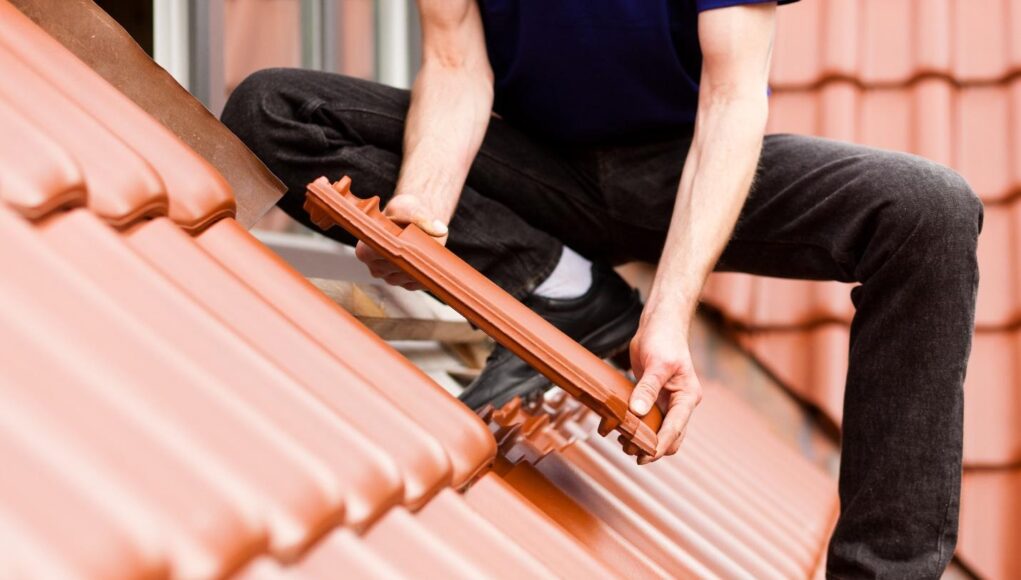Algae, falling debris, and damage from the elements are some of the things that can cause your shingles to deteriorate over time. When the quality of your shingles no longer meets the standard, installing replacements is necessary to maintain the structural integrity of your home.
Before replacing roof shingles, knowing a few tips can ensure a safe and proper installation. And remember: going the DIY route is great, but don’t hesitate to ask a roofing specialist if you need help with your roofing project.
Prioritize Your Safety
Observing proper safety guidelines is crucial for DIY roofing projects. Doing so prevents accidents and guarantees correct shingle installation, saving you the trouble of spending extra on additional roof damage costs. Here are a few tips to take note of to ensure a safe worksite:
- Set a ladder on an even and smooth surface. Remove any debris on the ground before positioning the equipment, and rest the ladder against a sturdy wall or surface.
- Handle and use a pneumatic nail gun properly. Never rest the power tool against your body, and turn off the air compressor tank when not in use.
- Avoid randomly tossing tools and items from the roof to prevent hitting people or structures on the ground.
- Never carry too many materials at once to avoid straining your back.
Choose the Best Shingle Type
When replacing roof shingles, take some time to research the most suitable option for your house. How long your replacements last hinges on which material you choose, so make an informed decision if you want long-lasting installations.
Due to being durable, weathering-resistant, and affordable, asphalt shingles are among the most preferred types. But many options are available on the market, such as steel, aluminum, and cedar shake shingles, so ask a roofing contractor for advice on which kind suits your home best.
Don’t Replace Shingles During Bad Weather Conditions
When planning a DIY replacement, the optimal weather condition for the task is during moderately humid days, which is about 55 degrees. On the flip side, installing new shingles on days with extreme heat is not advisable to prevent roofing adhesive from drying out quickly. Take note to avoid direct sunlight when applying replacements, too.
Low temperatures also present potential issues for DIY roofing projects. The cold can cause them to become brittle and easily breakable. And for your safety, don’t proceed with your project on days when it’s rainy or very windy.
Apply the Racking Method
To ensure that your new shingles stay straight, install the replacements using the racking method, also known as the staggering method. This strategy involves arranging shingles vertically from top to bottom, creating a watertight roof. As the proper way of installing shingles, the racking method offers several benefits for you and your roof. Should a shingle go out of alignment, the column-style positioning makes the askew shingle more visible so you can put it back into place. Racking also allows professional roofing contractors to complete shingle installation projects significantly faster.
Use Felt Roofing Underlayment
An essential part of your roofing system is the roof felt, a waterproof barrier that covers your decking. It protects your shingles by preventing moisture whenever it rains.
Use felt underlayment when installing new shingles, as your roof may undergo several issues over time without it. Some possible long-term problems include mold growth and a weakened structure, which can cost more with unexpected repairs and replacements.
Some installation notes: the placement for roofing felt installation should be in overlapping layers. Also, never mount the waterproof underlayment on wet roof sheathing.
Line Your Roof With Chalk
Creating a visual guide makes installation easier and prevents installation errors. You can use chalk lines to mark your roof, place shingles accurately, and avoid design mistakes for your project.
Use a tape measure when chalking your roof, especially when it comes to roof valleys. Take your time when marking, as a rushed chalk line can lead to aesthetic errors you may only notice during or after installing your shingles.
Ask an Expert About Your Roofing Project
Always observe all the proper guidelines when replacing roof shingles for your safety. If you encounter any issues on your project, seek help and reach out to a roofing contractor in your area.














